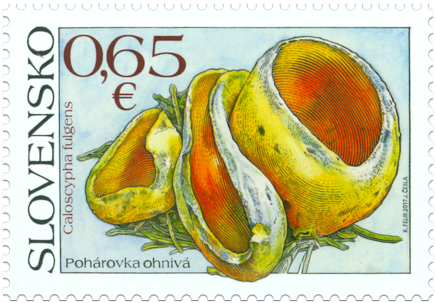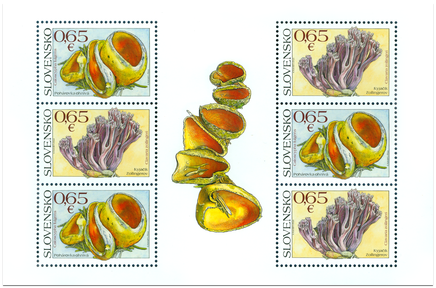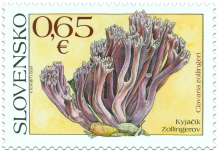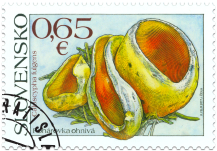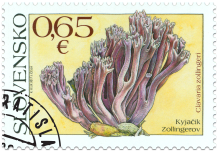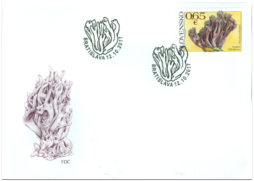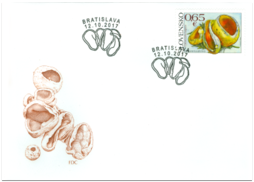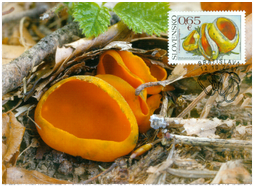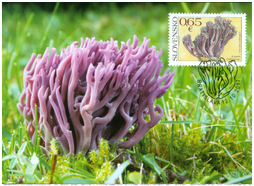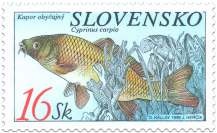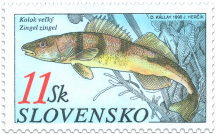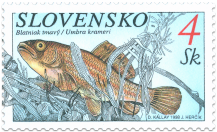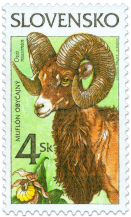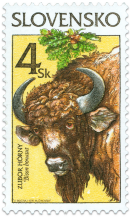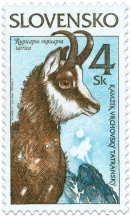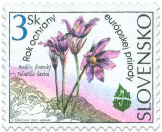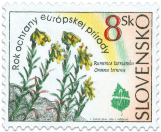642 Date of issue
12.10.2017 Face value
0.65 € Sell price
0.65 €
Caloscypha fulgens is a widespread species of mushroom. It is a striking spring mushroom of the Pezizales order. It belongs among the ascomycetes, because the spores are formed in a so-called asci from where they are gradually released into the environment. The sporocarp of Caloscypha fulgens is of a spherical or cup shape, 10 − 40 mm in diameter. In adulthood, the sporocarp is often almost fully unfolded and has wavy, sometimes cracked edges. It is tasteless and without a strong odour. The stem on the base is usually not visible. The colour of the sporocarp is most often a vivid yellow, yellow-orange or orange and it is usually somewhat darker and smooth on the inside. The surface on the outside is grainy and of a greenish or olive-green colour especially around the outer edge of the sporocarp. The greenish colouring, which is an exceptional feature of the Pezizales species, is usually more prominent in older sporocarps or after bruising or in dry weather. The spores are transparent and have a spherical shape. This species of mushroom is saprobic, i.e. it breaks down dead organic matter, most frequently the wooden plants under which it grows. Its sporocarps are edible; however, due to the rarity and small size of the species, it has no gastronomic significance.
Caloscypha fulgens grows in the spring months, often right after the snow melts. It grows in groups and also, but rarely, alone on the decaying branches of coniferous trees, typically fir trees in Slovakia. It is very rare in Slovakia, it is distributed all over the country with exception of the lowlands. It can be most commonly found in fir, fir-beech and spruce forests. It can be also found in mixed forests or in bushes on the edges of the forest. It prefers a limestone or neutral subsoil. The sporocarps are not formed every year instead they only appear in large numbers in favourable years. It belongs amongst the most beautiful spring mushrooms and due to its rarity, it is also listed in the Red List of Slovak Fungi.
Milan Zajac
Similar products
190 Date of issue
21.09.1999
159 Date of issue
07.09.1998
158 Date of issue
07.09.1998
157 Date of issue
07.09.1998
130 Date of issue
17.09.1997
128 Date of issue
17.09.1997
129 Date of issue
17.09.1997
96 Date of issue
16.07.1996
97 Date of issue
16.07.1996
98 Date of issue
16.07.1996
57 Date of issue
28.02.1995
58 Date of issue
28.02.1995
© 2025 POFIS - Postal philatelic service. All rights reserved

